Calgary Transit then and now – The Bay
It’s 1971 and we’re in downtown Calgary. Parked in front of the massive Hudson Bay Company outlet are a couple transit buses, including one trolley coach. I wonder what things there look like today? Well, let’s return to the location of the original photo and see. The HBC or “Bay” department store, an impressive structure and one of the city’s iconic landmarks, stands today and dominates both pictures and it will help us tie the two eras together.
In spite of the forty plus years that separate the images, the overall scene is very much as it was. Sure some of the buildings in back are gone, but the Bay appears no different than it did. That structure, by the way, dates from 1913 with additions added in later years. This building was and I believe may still be largest department store in Calgary. It’s so big, it deserves a report of its own (maybe one day). Note the old script lettering on the building, left side centre, in both pictures. HBC is Canada’s oldest company, and perhaps one of the oldest in the world, and was founded in 1670. Yes, I said 1670!
Of the buildings clearly seen in back, the one marked “The Herald” was torn down only recently. This used to be offices for a local newspaper – hmm, did any mild mannered reporters work there? The round structure, which reminds one of the Capitol Records Building in Hollywood, was at the time known as the Summit Hotel, later renamed the Sheraton. Constructed in the mid 1960s, this was another well known Calgary landmark and was torn down in the late 1980s.
The towers seen in back in our “now” picture are of little interest to this author and nothing of note can be said about them. They are plain, ugly office buildings, lacking anything in the way of personality.
Let’s take a look at the buses seen in the old image. Up first is a Canadian Car and Foundry (aka CC&F) trolley bus, #428. Built in 1947, in Fort William Ontario (now Thunder Bay), she was one of thirty Calgary Transit trolleys built that year and was the city’s’ first such order. It’s a model T44 (Trolley – 44 passengers), one of an eventual seventy seven on the roster built up until 1950 (four orders). A further eight model T48a buses, slightly larger but otherwise similar looking arrived in the period of 1950-1953 (two orders). Lastly, the city purchased twenty second hand US built model TC44 buses in 1959, which were visually different in appearance.
These buses, referred to as Brills, were built under license from the Brill division of American Car and Foundry in the US. AC&F and CC&F were not connected in ownership even thought their names were quite similar, the later only licence-built products from the former. CC&F trolley bus production ran from 1945-54. The company also made internal combustion powered buses from 1945-1962. The plant where they were made at various times built rail cars, aircraft, logging equipment, military vehicles and highway trailers. Today they are back to making railways passenger cares and rail transit vehicles and are owned by transportation conglomerate Bombardier.
Calgary’s trolley bus system was essentially an off-shoot of the old tracked trolley (aka tram) network. Many cities after World War Two, Calgary included, who had an ageing tram system in need of replacement turned to the trolley bus instead. It made financial sense and a transit operator could reuse much of the former’s physical plant (substations, lines, poles), making the transition from the old fashioned inefficient tram to the modern bus both easy and cheap (relatively speaking). Most trolley networks across Canada were put in place following the war.
Why not use diesel buses instead? At the time few were being made and they were still seen as rather experimental or at best, unreliable, underpowered or dirty, or some combination thereof. Many transit operators had rather limited experience with internal combustion engines and viewed these unproven interlopers with suspicion. At least that was the attitude in the 1940s. Diesel technology advanced quickly however and by the early 1950s it would be embraced by transit operators. The trolley bus boom, as brief as it was, had by this time ended. None the less, many cities kept their networks for many decades.
Calgary Transit did order some gas powered buses around the time the trolleys were built but these were used on less demanding routes. It would not be until the mid-1950s before diesels were purchased. The city’s TB network, by the way, was shut down in 1975. There used to be a dozen or so such systems in Canada, but outside Vancouver, all are now gone.
The trolley bus seen is on the South Calgary run, aka route #7, which travelled from downtown to the “suburbs” in the southwest quadrant of the city. Much of this route was formerly served by a tracked trolley. The run today is almost identical to what it was when the original image was captured, although of course the buses are diesel powered now.
Seen in behind the trolley bus (aka trolley coach or trackless trolley) is a ubiquitous GMC “Fishbowl”. This was its nickname and it comes from the layout of the front window which gave a magnified and somewhat distorted fishbowl effect. Officially it was known as a “New Look” by its manufacturer.
On blowing up the picture, we see the bus is #637 which was almost brand new at the point and was built only the year before the original image was captured. It was manufactured at the General Motors Diesel Division locomotive factory in London Ontario. This model was the most commonly seen transit bus in Canada for a time and was produced from 1961-1987 (they were also built in the US). It is on the #13 route, which still stops at this spot today.
Seen across the road and facing away is sister bus #639, also from 1970. Fourteen “Fishbowls” were delivered that year and Calgary Transit would eventually roster several hundred of this model (across many sub-models, built 1961-1982). Only recently were the last of these retried from CT service. They were that good of a design.
Of interest to car buffs in the original photo is a late 1960s/early 1970s Mustang Mach 1 seen broadside on the right side of the picture. These were the embodiment of the American Muscle Car – big, powerful and dripping with attitude.
The original image was supplied by LindsayBridge (thanks Lindsay) and was a scan from a 35mm slide. The original had deteriorated over the years and is discoloured, so we decided to use a similar tone on our pictures. This aged blue look was preferable to the ugly brown and grey that was this day anyway.
If you liked this report, be sure to check out these ones…
Calgary Transit then and now – Elbow Drive part 2.
Edmonton Transit then and now – 95th St.
Calgary Transit then and now – trolley buses and Devenish Apartments.
If you’d like to know more about what you’ve seen here, by all means contact us!
Date: March, 2014.
Location: Calgary, AB.
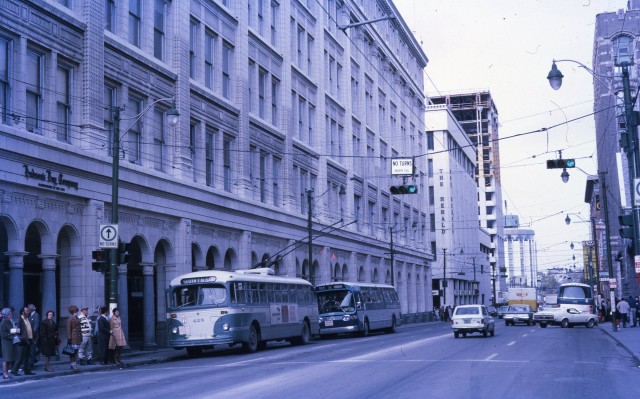
Calgary Transit buses in front of the Bay, circa 1971.
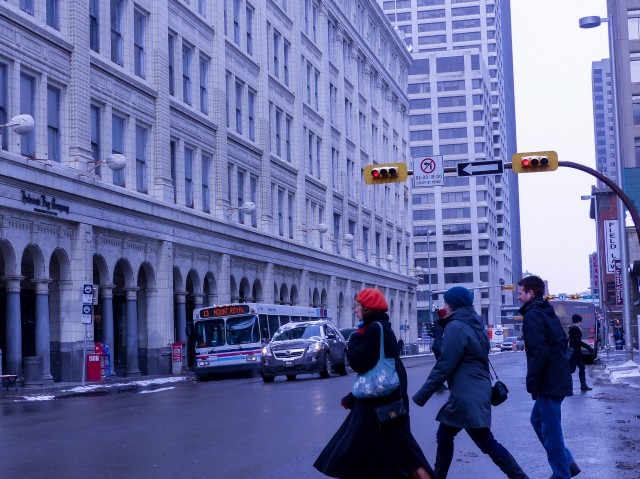
The same view, also in blue, in 2014.

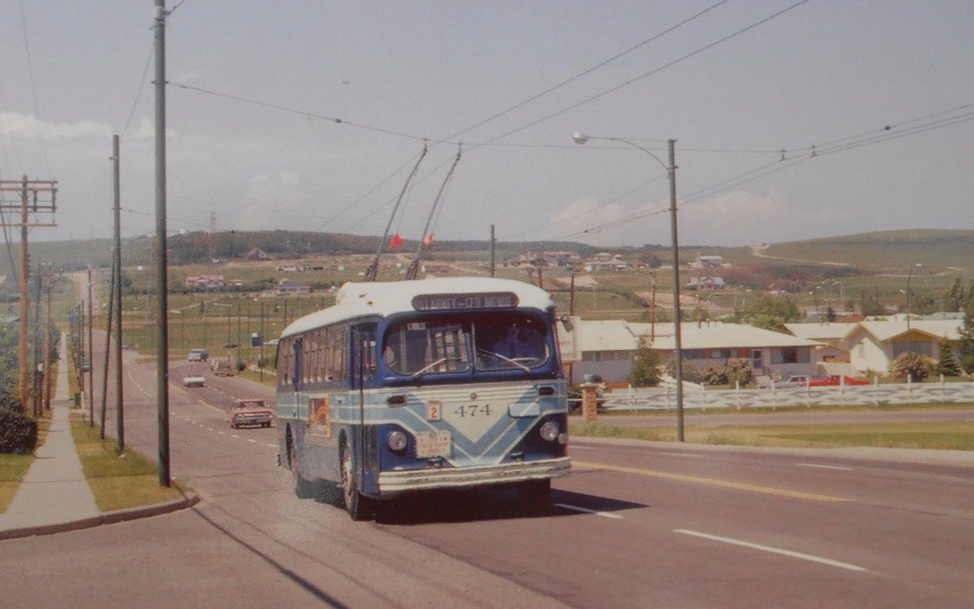
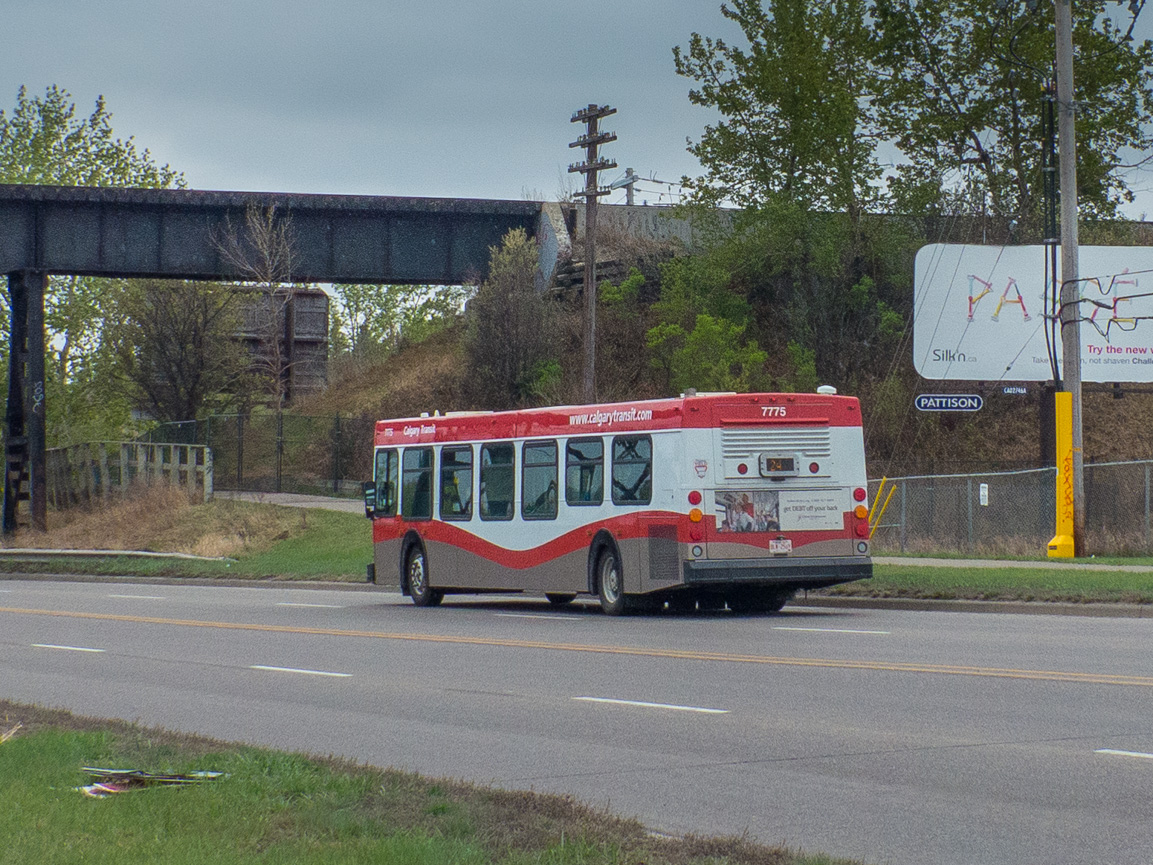
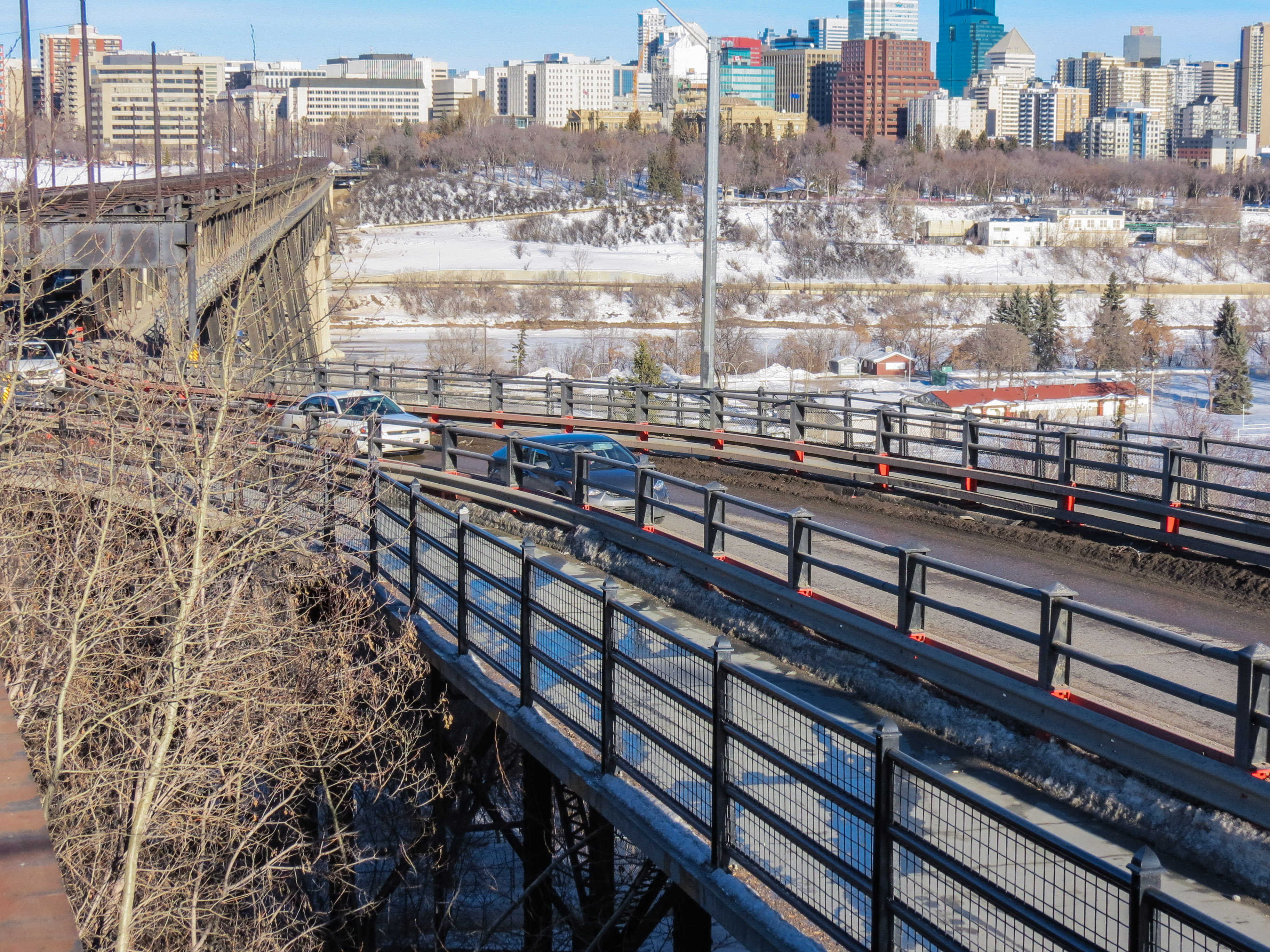
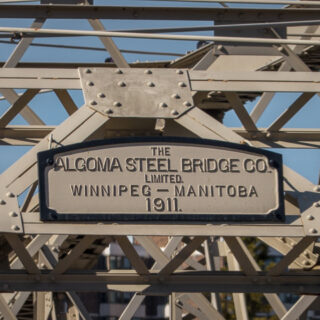
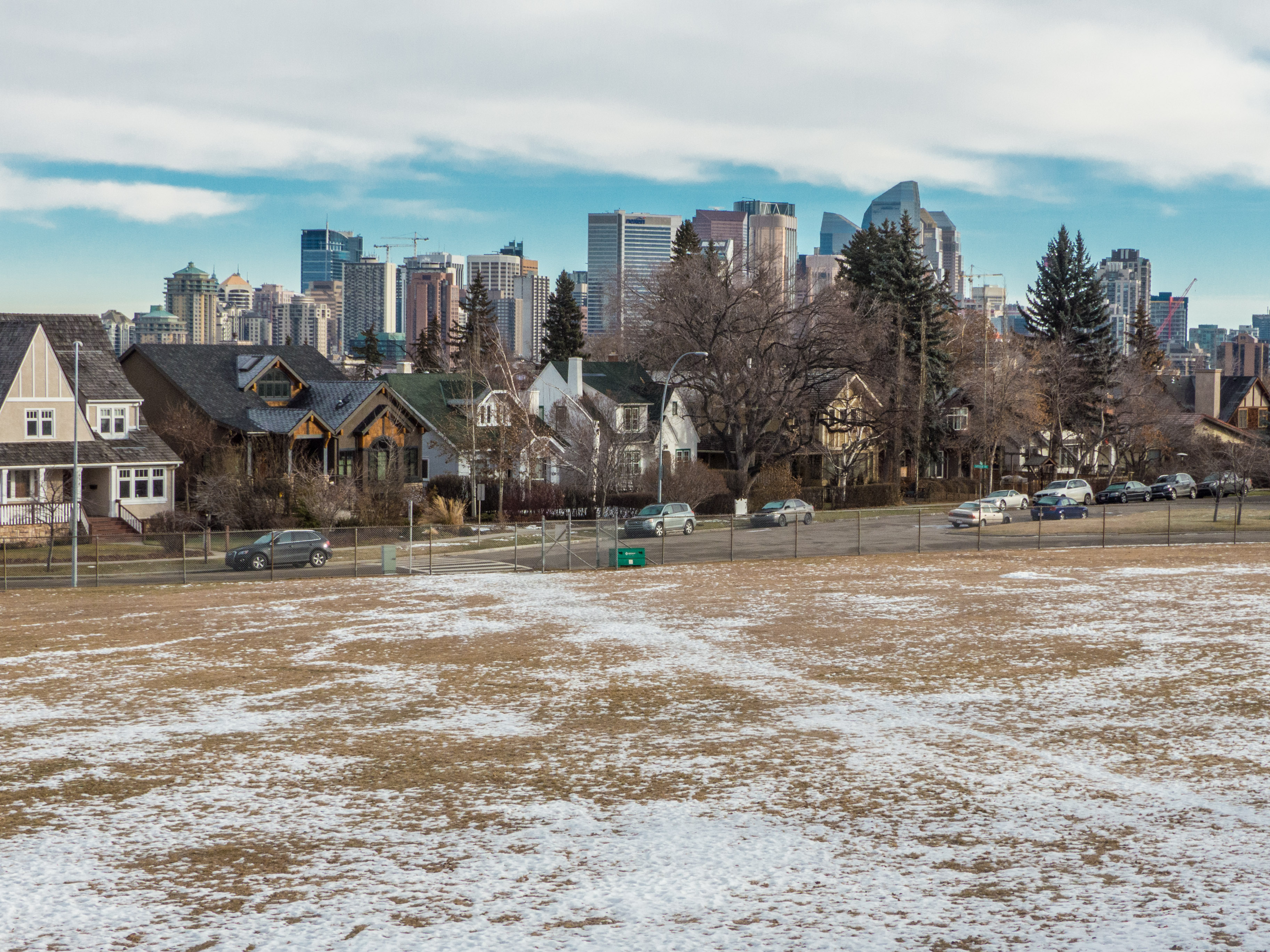
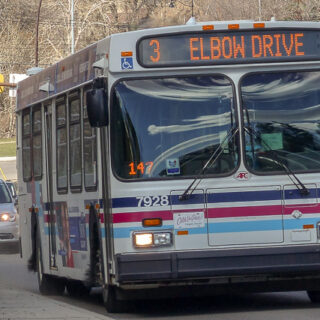
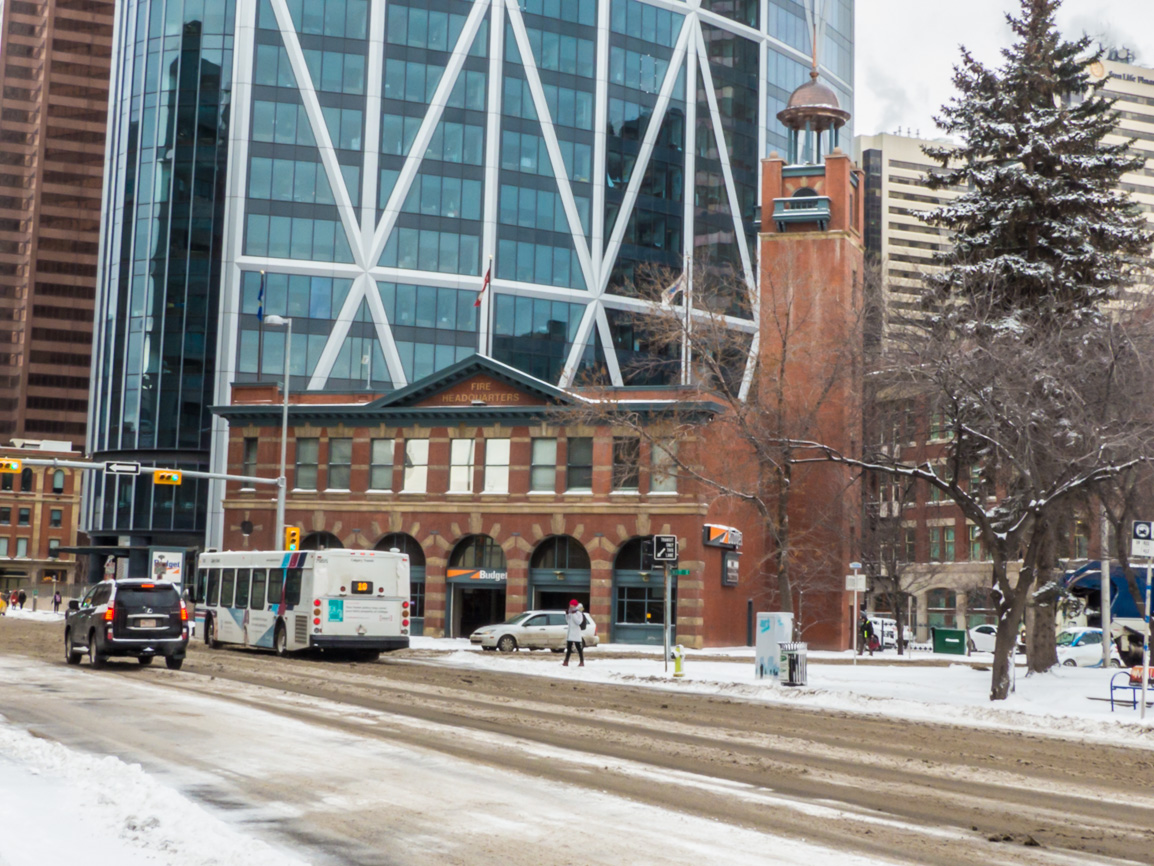
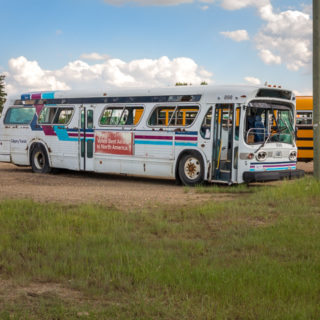
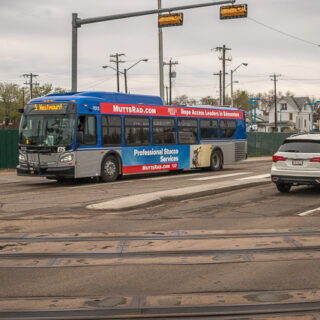
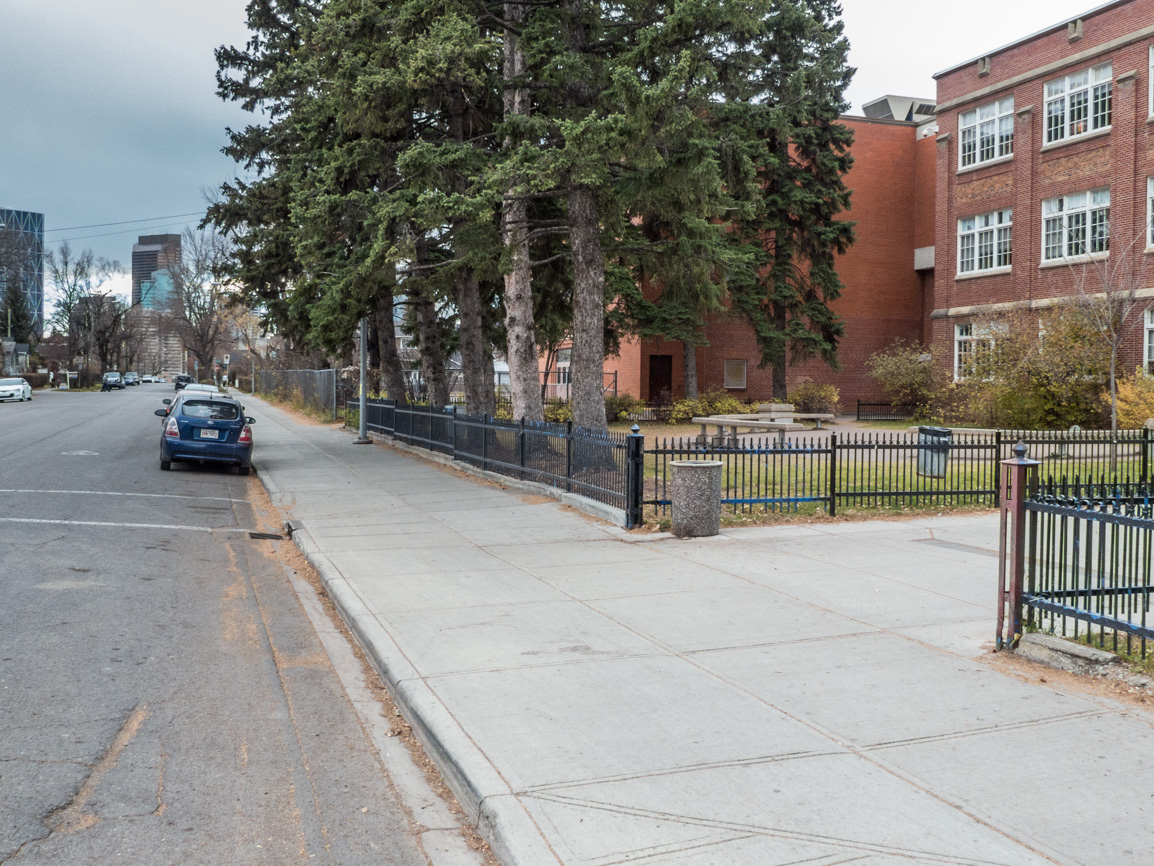
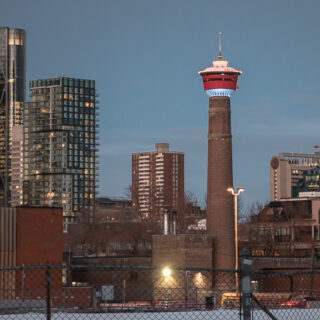
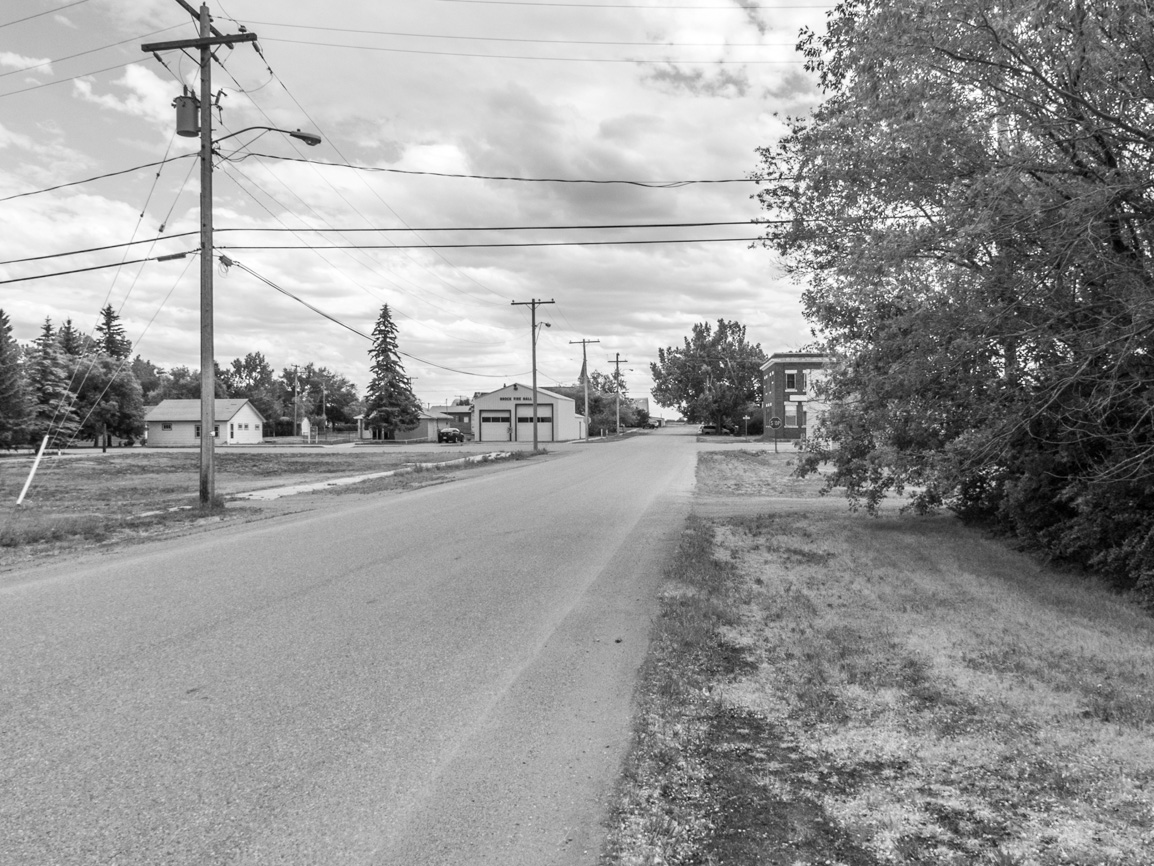
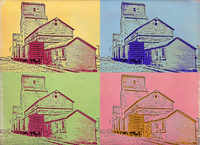






The electric buses were warm. Much appreciated in the winter. Going from a 17 th ave or south Calgary line to an old diesel Manchester was a bummer
Awesome memories!
I miss The Herald building.
It was a fixture on that corner and now it’s gone.
With fishbowls and old Can-Car/Brills…nice.
Not just nice, but very, very, very nice!
I always remember my parents taking us to the Bay a lot!
My mom used to shop there as well, but preferred cheaper options like Woolco.
I recall visiting the Bay with my mom in the 1960s. She’s shop and shop and shop, for hours on end. Then we’d have lunch, shop some more then head home on the bus, with many packages in hand. I don’t recall if they were trolley buses.
Haha, great story!
Wow that old photo brings back some memory’s .
I helped my older cousin sell newspapers (The Herald) on Saturdays at that Bay corner in the 60’s.
Thanks for the look back Chris.
It was my pleasure! I love how these old pictures help stir up the memories of our readers.